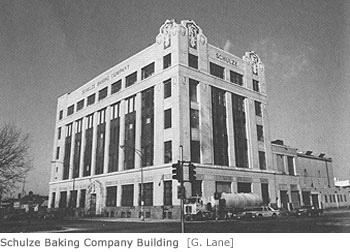
Site M
Turn left and go north on King Drive to Garfield Boulevard (55th
Street). King Drive forms the western boundary of Washington Park,
which stretches from 51st to 60th Streets. Originally planned as a suburban
retreat, the park provided much-needed open space for apartment dwellers
in the adjoining Grand Boulevard and Washington Park communities. Since
the 1920s Washington Park has also served as the boundary line between
Chicago's Black Belt and Hyde Park and Kenwood. While the University of
Chicago played a crucial role in maintaining Kenwood and Hyde Park as integrated
communities, its influence did not extend across Cottage Grove Avenue into
the Grand Boulevard and Washington Park neighborhoods.
The first all-black park in Chicago, Washington Park is the scene of
the annual Bud Billiken Parade, the city's oldest neighborhood
parade. As a young black reporter on the Chicago Defender. Willard Motley
wrote a weekly column in the early 1920s under the name "Bud Billiken."
So great was the appeal of this Buddha-like comic figure that Defender
editor Robert S. Abbott named the parade Bud Billiken. Nearly twenty years
after the parade had become an established institution. Motley achieved
critical acclaim for his novel, Knock on Any Door.
Site
N
 Turn
west onto Garfield Boulevard and continue three-quarters of a
mile to the Dan Ryan Expressway. This section of Garfield Boulevard
once contained major businesses such as the Wanzer Milk Company
and the Schulze Baking Company. In an area plagued by high unemployment
and crime, the Butternut Bread Company remains as one of
the few large businesses in the old Black Belt. It occupies the
white terra-cotta building at 40 E. Garfield Boulevard, which
was constructed in 1914 by the Schulze Baking Company. Turn
west onto Garfield Boulevard and continue three-quarters of a
mile to the Dan Ryan Expressway. This section of Garfield Boulevard
once contained major businesses such as the Wanzer Milk Company
and the Schulze Baking Company. In an area plagued by high unemployment
and crime, the Butternut Bread Company remains as one of
the few large businesses in the old Black Belt. It occupies the
white terra-cotta building at 40 E. Garfield Boulevard, which
was constructed in 1914 by the Schulze Baking Company.
The above photograph shows the Schulze Baking Company building in 1985.
John Ahlschlager designed this imposing terra-cotta structure in 1914
for Chicago's largest wholesale concern. Known throughout the country
as the home of Butter-Nut Bread, this building was added to the National
Register of Historic Places in 1982.
«
previous 10
of 10
|